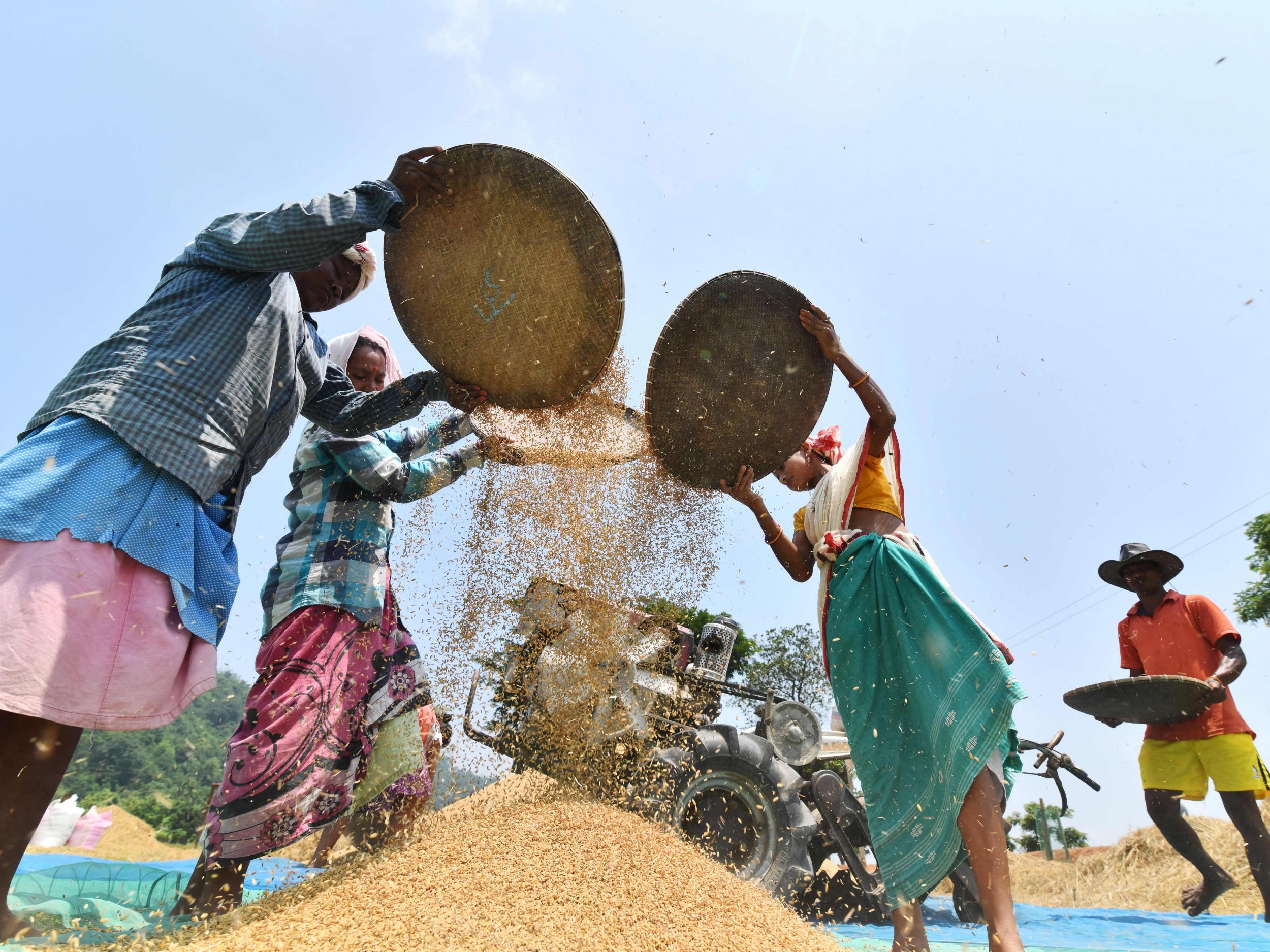India must ditch rice to feed growing population, scientists warn
Conventional crops use too much water and do not provide enough nutrients

Your support helps us to tell the story
From reproductive rights to climate change to Big Tech, The Independent is on the ground when the story is developing. Whether it's investigating the financials of Elon Musk's pro-Trump PAC or producing our latest documentary, 'The A Word', which shines a light on the American women fighting for reproductive rights, we know how important it is to parse out the facts from the messaging.
At such a critical moment in US history, we need reporters on the ground. Your donation allows us to keep sending journalists to speak to both sides of the story.
The Independent is trusted by Americans across the entire political spectrum. And unlike many other quality news outlets, we choose not to lock Americans out of our reporting and analysis with paywalls. We believe quality journalism should be available to everyone, paid for by those who can afford it.
Your support makes all the difference.India must shift from growing mainly rice and wheat to other crops that are healthier and better for the environment, according to new research.
Current estimates suggest the nation will have to feed nearly 400 million more people by 2050 – a significant undertaking given that it already struggles with widespread malnutrition and lack of water.
The study conducted by an international team of scientists aims to address two key targets of the Indian government – to improve the nation’s nutrition and promote sustainable water use.
Currently, almost a third of India’s population are anaemic, and huge swathes of the country are severely lacking in waster due to heavy extraction for agricultural irrigation and less rain from recent monsoons.
Indian diets are largely based on cereal crops, but the scientists suggest that the currently favoured varieties are contributing to the country’s problems.
"If we continue to go the route of rice and wheat, with unsustainable resource use and increasing climate variability, it's unclear how long we could keep that practice up," said Dr Kyle Davis, a Columbia University scientist who led the research. "That's why we're thinking of ways to better align food security and environmental goals."
The research team looked at six grains currently grown in India: rice, wheat, maize, sorghum, and pearl and finger millet.
Their results, published in the journal Science Advances, revealed that rice is the least water efficient cereal in India, and wheat was playing a significant role in driving water loss due to its high irrigation demands.
In addition, they looked at the nutrient value of crops for components like calories, protein, iron and zinc.
Their results suggested that replacing the current standard crops with maize, finger millet, pearl millet or sorghum would improve iron production by over a quarter and zinc by around a tenth.
Much of India’s reliance on rice and wheat comes from the so-called “green revolution” of the 1960s, a period in which the widespread rollout of new agriculture technologies led to a massive boost in crop production.
While these innovations played a significant role in reducing widespread hunger across the region, they took their toll on the environment, increasing greenhouse gas emissions and pollution.
Dr Davis said that while changing the dietary preferences of over one billion people might be tricky, there are still regions where alternative crops are consumed in “pretty large amounts”.
Some states are already pushing for more focus on these crops, and the Indian government has dubbed 2018 the “Year of Millets”.
"If the government is able to get people more interested in eating millets, the production will organically respond to that," said Dr Davis. "If you have more demand, then people will pay a better price for it, and farmers will be more willing to plant it."
A farming revolution could be aided further if the Indian state begins providing smallholder farmers with the same kind of subsidies that current incentivise them to planet rice and wheat.
Join our commenting forum
Join thought-provoking conversations, follow other Independent readers and see their replies
Comments